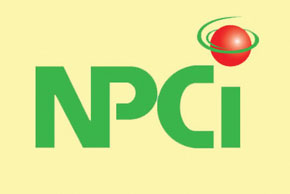
NPCI has created its own domestic card called RuPay, one of its best innovations enabling a large number of financial institutions to distribute this product among customers not having bank accounts, says Dr N Rajendran, Chief Technology Officer, National Payments Corporation of India (NPCI), in conversation with Poulami Chakraborty of Elets News Network (ENN)
What role does a CTO play for business development of a regulatory body like NPCI?
The National Payments Corporation of India (NPCI) has been created to regulate retail payment systems by the RBI. There existed a lot of payment methods and systems within the mechanism of Indian economy like interbank ATM services, NEFT, etc. The RBI wanted to create a separate system to regulate and supervise the other retail payment services. With this, the RBI instrumented IVF, now known as NFS (National Financial Switch).
We are a 25-year-old company with 60 per cent of our stakeholders in PSU banks and the remaining 40 per cent with the private and corporate banks. Even though we have expanded the Board now, the same structure continues where 60 per cent presence is from PSU banks and 40 per cent from private banks.
We are the only payments facilitating regulators in the country, mostly in inter-bank transactions. The RBI has already asked us to make a checklist of cheque clearing procedures, given that we are the only institute responsible for check passing and clearing in India. The National Automatic Clearing House (NACH) is a product of NPCI, which was earlier conducted by the RBI for ECS clearing, and now has been transferred to us.
Besides this, we have also processed NFS, which is the domestic processing for ATM cards. Irrespective of scheme and banks; we are responsible for all cards. In addition to these, we have created our own domestic card called RuPay, one of our best innovations enabling large number of institutes to distribute this product among customers not having bank accounts in large financial institutions. Even the newly introduced small banks and payments banks can also provide an ATM Card which can be used in any ATM in the country. Besides, our institution is also responsible for functioning and payments in the e-commerce construction and also for merchant establishment. In a recent measure, we have also introduced UPI (Unified Payment Interface) which is still in a regressive testing phase so that more and more banks can adopt it for direct customer facilitation.
 Tech implementation in the Banking sector has evolved with time. How do you see the tech implementation in sector reaching the next level?
Tech implementation in the Banking sector has evolved with time. How do you see the tech implementation in sector reaching the next level?
We have experienced a holistic technological evolution of the banking industry, starting from introduction of computers, total bank automation, core banking system, etc., which show how rapidly the banking industry has adopted technology over the years. These are not because the financial institutions have to introduce these facilities in their systems, it is also because of the society that was open enough to accept these changes and hence adopted them. Earlier, there used to be connectivity issues in our country, which has been curtailed to a great extent and can also have great infrastructure facilities, with which the banks are able to provide great services to their customers with application of newer and newer technologies.
Thus, the growth percentage of tech-dependence and its application is forecast to be rapid and in double digits for the years to come. Given the unbeatable competition among financial institutions in the market, banks would require to innovate on technologies and increase their infrastructure and facilities to be made available to people round the year and round the clock to sustain in the market.
We do not face the end-customers, as it’s the banks which are our customers. Most ATM transactions happening through various commercial bank channels actually happen through NPCI
What tech adaptation has been effected within the NPCI ecosystem to make lives of their stakeholders easier?
We do not face the end-customers, as it’s the banks which are our customers. Most ATM transactions happening through various commercial bank channels actually happen through NPCI. For this, that level of versatility is essential to process the payments anytime and at any place. In 2010, NPCI ensured this fact by taking over NFS from Institute for Development & Research in Banking Technology (IDRBT). Slowly, we have expanded our infrastructure and services to reach a transaction capacity of about Rs.32 million per day, including transactions for DBT and others. We have a capacity to handle transactions worth Rs.100 million per day, with the current set of infrastructure that we have.
With the introduction of technologies, like Cloud, Social Network and Internet, how do you feel their convergence is going to impact the banking system?
Whenever a new infrastructure is introduced in the Indian banking, we have to work to understand how to use it. Of late, Cloud has emerged as a great facilitator of services in the Indian BFSI sector and we have to use it to know how to use to make its optimal use in our ecosystem. With these simple techniques, one may reduce the operational costs to a great extent.
Online wallets are the latest phenomena in the Indian BFSI sector. Do you think they are a threat to the physical banking or internet banking?
In this case, we have to focus on the untapped market in a highly evolving space for e-commerce, where there is a huge scope to cover the customers, who still prefer transacting through physical cash rather than through wallets, where one can never feel or touch money but can use to buy a utility or service.
Elets The Banking and Finance Post Magazine has carved out a niche for itself in the crowded market with exclusive & unique content. Get in-depth insights on trend-setting innovations & transformation in the BFSI sector. Best offers for Print + Digital issues! Subscribe here➔ www.eletsonline.com/subscription/






















